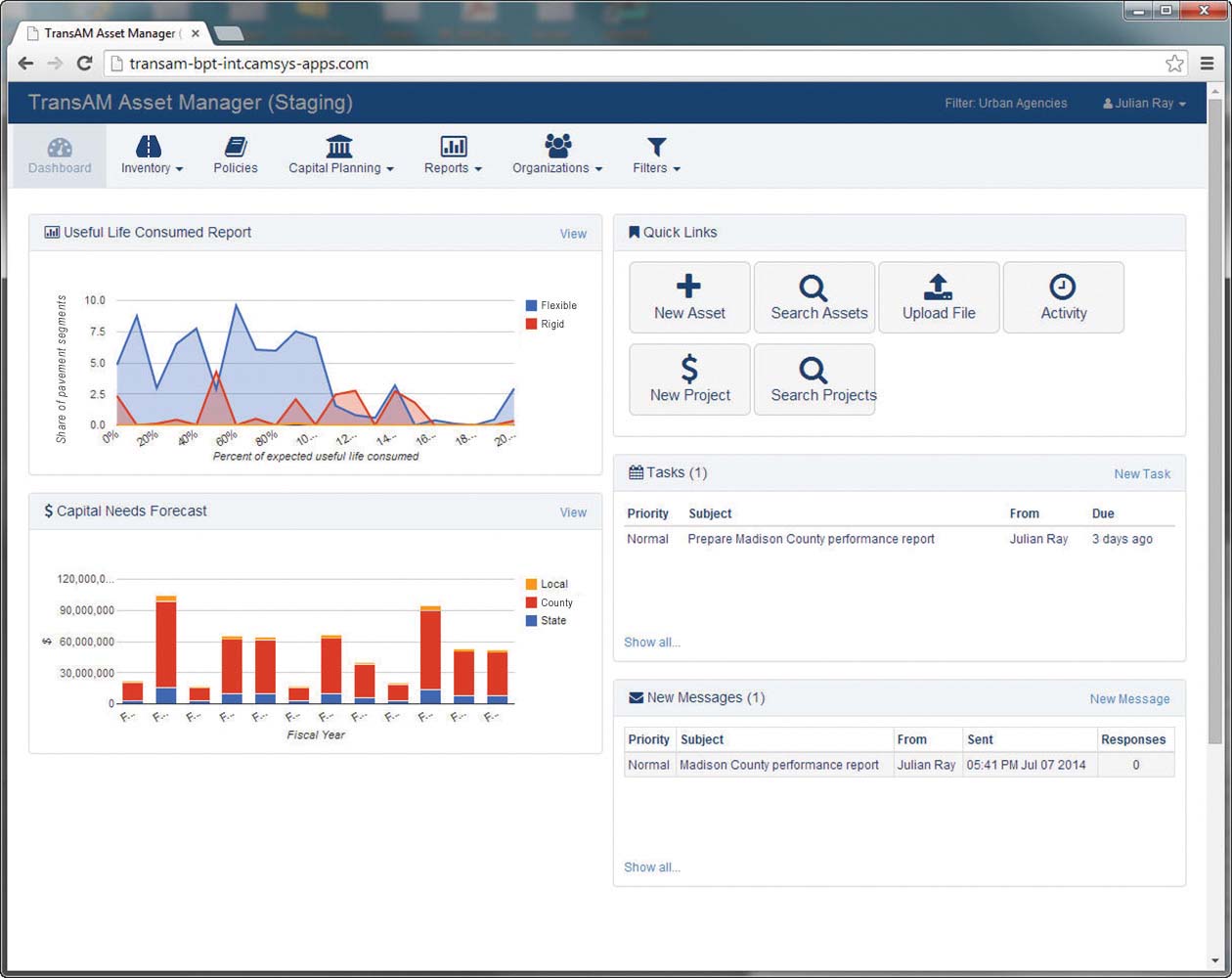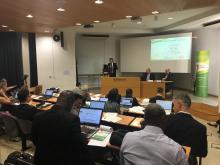
Jason Bittner discusses effective strategies for implementing efficient asset management practices
The Moving Ahead for Progress in the 21st Century Act (MAP-21) established a performance-based highway programme aimed at improving how Federal transportation funds are allocated. The MAP-21 programme requires state departments of transport (DOT) to develop risk-based transportation asset management plans (TAMP) for roads and bridges. This move has also refocused attention on the need for asset management in the US.
A TAMP provides guidance for agency operations and collecting information about infrastructure assets – assets with rich condition information (bridges or pavements) and assets with less data (tunnels, culverts, guard rails, signs and pavement markings). TAMPs collect information on approaches for maintenance of individual assets, long-term spending forecasts, and larger agency management processes. Over time, the proper execution of the TAMP provides evidence of sustainable asset stewardship, effective use of resources, and justifications for future funding. The US
In 2002 Cambridge Systematics prepared the
Data and information challenges pockmark the planning process. Agencies are attempting to combine disparate data sets that have not been collected at an agency wide level before. There is a push to make sure that new data sources are captured and that the right data is collected. Many states have struggled with the tools needed to perform the necessary data inquiries and the collection and maintenance of data over the long term. All states preparing asset management plans have attempted to identify appropriate levels of data aggregation, reporting, and consistent collection processes.
Organisational issues are another barrier to successful Asset Management efforts. Some organisations have struggled with turning to preservation-first philosophies. As in many bureaucratic organisations, change is slow, but dedicated champions and lasting structures have emerged. There is no single approach to implement TAMP, and each state plan reflects that, but organisational acceptance is needed to ensure success. Engaging and involving top level executives is a common best practice.
MAP-21 requires that the TAMP is risk-based. Risk assessment, management, mitigation, and basic understanding punctuate the early TAMP work. Risk registers identify the priorities for agency consideration. The agencies also have begun to analyse risk-based trade-offs within and among selected asset types. Colorado looked to lower cost strategies for managing assets through their life cycle. North Carolina and Utah DOTs have pursued risk-based analysis models for decision-making. Minnesota adopted a trade-off approach to define a “risk appetite” for the traveling public.
Finally, states are using the TAMP for telling their story. The TAMP is a good communication and collaboration tool. Information and condition stories can be crafted that resonate with the public and legislators alike. Internally, the TAMP development process has been effective at communicating asset management policies and strategies for transparent decisions and support of economic development, sustainability, and performance initiatives.
As organisations begin to implement Transport Asset Management, there are several lessons to be learned from the US experience. It is vital to properly implement asset management programmes and this requires a legal and regulatory framework making it mandatory to undertake asset management. The involvement of stakeholders across an organisation, and a broad range of planning processes are essential for the success of an asset management programme. Providing organisations with a vision, principles and guidelines for implementation of asset management helps. Organisations should have some flexibility and freedom to determine how best they can implement and use asset management. Identifying and implementing data collection processes to collect data to support performance-based asset management is an important factor in implementing asset management.
While it is still an early stage for implementing performance-based asset management and there is room for developing and learning, the potential for transforming the way infrastructure networks are maintained and managed has never been more readily apparent.
- Jason Bittner is a member of the US National Academy of Sciences Transportation Research Board Committee on Transportation Asset Management and holds degrees from the American University in Washington DC and the University of Wisconsin-Madison.
IRF and University of Birmingham developing bonds
In addition, for the last 15 years the Senior Road Executive Programme has provided continuing professional development for senior professionals working in the road sector and, by so doing, contributed to the dissemination of knowledge and expertise and facilitated the implementation of modern approaches to the management and financing of road networks worldwide.
The University of Birmingham is now offering three new hands-on courses: iRAP and Road Safety (1-5 September), HDM4 and Road Management (8-12 September) and Rural Roads for Development (15-19 September). All three courses are 5-day, intensive and practical residential programmes delivered by experts of international repute. They are aimed at road sector professionals, road engineers, field engineers, planners and road safety professionals who want to be exposed to cutting-edge established methodologies in road safety management, road economics and rural transport for development.
The programmes are relevant to conditions found in both developed and developing countries and are suitable for professionals who want to pursue a career in the road sector.







